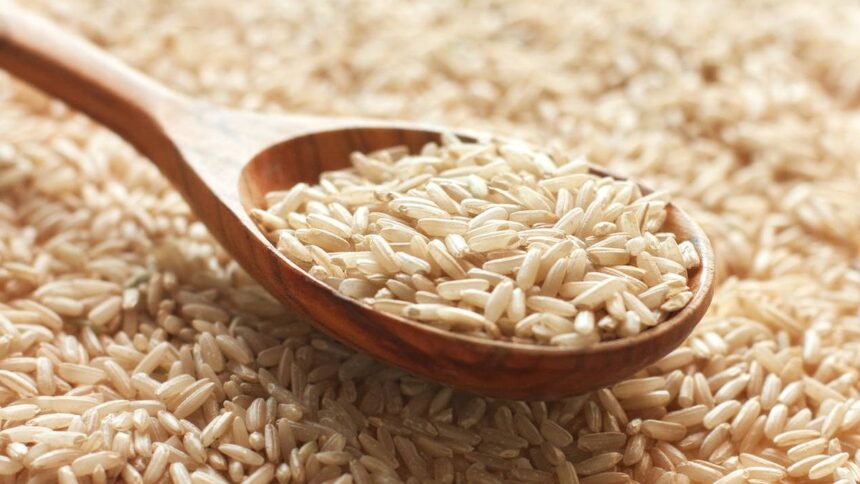Arsenic, an inorganic contaminant found naturally in the environment, has sparked concerns in food safety, particularly in rice products. The variability in arsenic levels among different types of rice is attributed to geological factors, cultivation methods, and processing. Rice, cultivated in flooded fields, tends to absorb arsenic more readily than other crops, facilitating the transfer of arsenic from soil and water to the grains.
The choice between brown and white rice adds another layer to this concern. While brown rice is nutritionally superior, it tends to have higher arsenic levels because arsenic accumulates in the bran, which is removed during the processing of white rice. However, specific varieties, such as long-grain white rice, often exhibit lower arsenic levels. This is partly due to cultivation and processing practices that limit arsenic absorption, as seen in basmati rice, grown in areas less prone to high arsenic levels.
Arsenic’s presence in the earth’s crust, forming part of various minerals, rocks, and soils, occurs naturally. Events like wildfires, volcanic eruptions, earthquakes, or the simple erosion of rocks and minerals disperse this chemical in the environment. Human activities, such as industrial emissions (from fossil fuel energy production or metal ore smelting), industrial uses (as an alloying agent or as an impurity in fertilizers or pesticides), contribute to arsenic in the soil of rice-growing areas and subsequently in the food.
The concern arises because one form of arsenic, inorganic arsenic, has been classified as carcinogenic and genotoxic. Prolonged exposure can have detrimental health effects, including the development of various types of cancer, such as lung, bladder, or skin cancer. Therefore, recommendations for rice consumption and preparation aim to minimize arsenic presence in the diet.
Recognizing the health risks associated with inorganic arsenic, the European Commission has set maximum limits for its presence in foods, including rice. These regulations are crucial to minimize consumer exposure to arsenic, especially safeguarding vulnerable groups like children. The limits are set at 200 micrograms per kilo for white rice intended for adult consumption and 100 micrograms per kilo for rice products intended for infant food.
Arsenic Limits: A Closer Look
In the latest review by the European Food Safety Authority (EFSA), a safety value of 0.06 micrograms of inorganic arsenic per kilogram of body weight per day is established, based on a 2013 US case-control study on skin cancer. This translates to, for example, 4.5 micrograms daily for a person weighing 75 kilograms. In other words, the toxicological reference value has been reduced fivefold compared to the 2009 value, which was a range of 0.3-8 μg of arsenic per kg of body weight per day.
As a result, the margin of exposure is also reduced, potentially being less than 1. Therefore, the EFSA considers consumer exposure to inorganic arsenic in food a health concern. In a 2021 report, it indicates that foods contributing most to arsenic exposure are rice and rice-based products, cereals and cereal-based products (other than rice), and human drinking water. Although in Spain, arsenic exposure is below the European average in all age groups studied.
[This is the bread with the most arsenic among supermarkets in Spain]
Pharmacist and nutritionist Marián García (Boticaria García) notes in her book “El jamón de York no existe” that rice bought in Spanish supermarkets is safe due to controls established by health authorities, as mentioned in this EL ESPAÑOL article. “Maximum limits for arsenic in rice and rice-based products have been set in the European Union by Regulation 1881/2006. In other words, legislation protects us and regulates that the amount of arsenic in the rice we buy will not cause harm,” explains the specialist.
She also provides a small tip to reduce arsenic levels in rice at home: soak the rice overnight for at least eight hours. Afterward, it is advisable to wash the rice “until the water runs clear.” Finally, the expert recommends cooking the rice with plenty of water (more than the traditional two parts per one part of rice).
Precooked Rice to the Rescue
To mitigate arsenic exposure, soaking rice before cooking and using a larger amount of water during cooking, discarding the excess water, is suggested. These practices can significantly decrease arsenic levels in cooked rice, reducing health risks. Additionally, diversifying the diet by including a variety of cereals can help limit arsenic exposure from rice. Hence, precooked rice stands out as having the least arsenic in supermarkets, as it undergoes the process of bran removal, soaking, and subsequent cooking before sale.
Basmati Rice and Native Short-Grain White Rice
Asian long-grain white rice, especially basmati, and native short-grain white rice have lower levels of inorganic arsenic compared to brown rice and other varieties of white rice. This is partly due to specific cultivation conditions and geological characteristics in the regions where these varieties are grown. For example, basmati rice is traditionally cultivated in the Indian subcontinent, in areas where irrigation practices and soil characteristics may contribute to lower arsenic absorption by the plant.
Native Short-Grain White Rice
Genetic selection and agricultural practices also play a crucial role in arsenic concentration in rice. Certain native varieties, such as short-grain white rice, have been observed to have a lower tendency to accumulate arsenic. This may be due to genetic differences in how plants absorb and translocate arsenic from soil and water to the edible parts of the grain. Researchers are studying these characteristics to develop cultivation practices and rice varieties that further minimize arsenic absorption.
In conclusion, making informed choices about rice consumption, opting for low-arsenic varieties, and implementing recommended cooking practices can contribute to a healthier and safer diet. Awareness of the risks associated with arsenic in rice underscores the importance of regulatory measures and individual efforts to mitigate exposure, ensuring the well-being of consumers.













